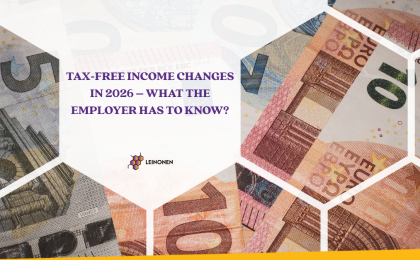The amendments to the regulation of paternity leave that will enter into force on 1 July 2020 concern all employers in Estonia. Both the duration of the paternity leave and the procedure for payment therefor will change.
Unlike the current paternity leave of 10 working days, fathers can take paternity leave for 30 calendar days. Paternity leave may be used starting 30 calendar days prior to the estimated due date assigned by a doctor or midwife until the child reaches three years of age. The employer has the right to refuse to grant paternity leave in the form of a shorter period than seven calendar days.
Due to the amendment, the Estonian legislature has also provided a transition period in the Employment Contracts Act, the wording of which is, according to the author of the article, not the clearest one for people with no legal background. Therefore, the author of the article hereby refers to the website of the Social Insurance Board and to the explanations provided by the Ministry of Social Affairs, pursuant to which the right to use paternity leave of 30 calendar days arises under the following two circumstances that exist at the same time: the birth of the child and the use of paternity leave as from 1 July 2020. Thus, the right to use paternity leave of 30 calendar days does not extend, for example, to a father whose child is born after 1 July 2020, but who starts using paternity leave before that date.
A significant amendment is also made to the procedure for payment for paternity leave as in connection with the amendment to paternity leave of 1 July 2020 a new type of parental benefit (additional parental benefit for fathers) will also enter into force in the Family Benefits Act. The additional parental benefit for fathers is paid by the state and it is calculated on the same grounds as the parental benefit currently in force. It is worth remembering here that an amendment to the currently valid parental benefit calculation system entered into force on 1 September 2019. Pursuant to the amendment, the parental benefit is calculated on the basis of the 21 calendar months preceding the child’s birth month from which the 9 calendar months preceding the child’s birth have been deducted.
One considerable difference, however, is that during the period when the additional parental benefit is paid to the father, the father may not work or receive other income. The amendment to the Family Benefits Act namely points out clearly that the provision, pursuant to which parental benefit does not decrease if the income earned at the same time is not higher than one-half of the upper limit of the parental benefit, does not apply to the additional parental benefit for fathers.
Taking into account, however, that the Estonian legislature may amend or modify legislation before 1 July 2020, it is not precluded that the information set out above may be somewhat different from the regulation that will enter into force on 1 July 2020.



